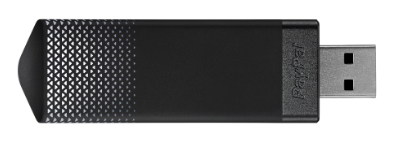We take it for granted on a daily basis, but the act of paying for goods is something that has been evolving for millennia. What started as bartering thousands of years ago, has proliferated into the wide variety of payment methods we have access to today. With recent technological advances in the last few years, the way in which we pay for goods is likely going to change more quickly than one might expect. While new technology often provides a great number of perks, it can also expose unexpected vulnerabilities.
Humans have been bartering as far back as 6,000 BC. Merriam-Webster defines bartering as “exchanging things (such as products or services) for other things instead of money.” Although bartering is no longer common in the developed world, it does still exist: http://goo.gl/rxVymT
As the exchanging of goods grew broader and more complex, additional methods of exchanging value became necessary. So humans invented currency. Early forms of money included, but were not limited to: the shekel, shell money, leather money, crude metal coins, the wampum (a string of beads made from white clamshells used by Native Americans), and gold.
By 1913, the Federal Reserve System was created in the U.S., establishing a centralized bank, aiming to provide the country with a safer, more flexible monetary and financial system. By the 1950’s, the first credit card was introduced, called the Diners Club. It wasn’t until the 1960’s that revolving credit was brought into the fold with the introduction of MasterCard and Visa. http://goo.gl/z5lJ0e
In the 1990s, we saw the first personal technology devices incorporated in day-to-day purchases. Pizza Hut can forever lay claim to hosting the first-ever online order, which was apparently a pepperoni pizza with mushrooms and extra cheese, purchased in 1994.
 By ’97, Coca Cola introduced “m-commerce” to the world when it installed 2 vending machines in Finland that could receive payment via SMS text. A year later, PayPal was launched in the US, sparking a massive change in the way we thought about making payments and sending money. The new platform had great allure due to the fact that it was simple, quick and often free to use. Today PayPal has 143 million active accounts in 193 markets.
By ’97, Coca Cola introduced “m-commerce” to the world when it installed 2 vending machines in Finland that could receive payment via SMS text. A year later, PayPal was launched in the US, sparking a massive change in the way we thought about making payments and sending money. The new platform had great allure due to the fact that it was simple, quick and often free to use. Today PayPal has 143 million active accounts in 193 markets.
Recently, PayPal introduced the “PayPal Beacon,” which will eventually allow account holders to make hands-free payments while shopping. The benefit of such a device is that it “eliminates one of the last remaining points of friction for consumers.” http://goo.gl/GvC39q
This Bluetooth Low Energy beacon service will automatically identify the shopper by connecting to their PayPal account via their smartphone when they walk into the store, using set pre-determined proximity range. Once the shopper reaches check-out, all she will have to do is tell the sales associate she is paying with PayPal and the bill will be directed to her PayPal account via corresponding PayPal POS integration.
No swiping, signing, or making change. Just walk out the door.
All this is made possible by reliable identification schemes. Because, really, that’s all a credit card is: a stream of numbers that tie back to a database which tells the merchant that the customer in question is a real person with real money – and keeps track of their expenditures within certain limits.
The future of payment is all about finding ways to accurately establish identity. And since identity means money in our modern world, the market for stolen identities grows larger with every new innovation in payments.
In December, a security breach at Target exposed 40 million PayPal users’ personal credit and debit card data. http://goo.gl/XOmcyg Just a few days ago, eBay and PayPal’s UK webpages were hacked and defaced by the Syrian Electronic Army. http://goo.gl/r7UCx6 This news comes in tandem with the breaking stories about Russians hacking smartphones of those visiting the country for the Olympics. http://goo.gl/0mYav8
Data and identity security is at the heart of payment innovation. Payments are a great example of how technology is providing meaningful simplification to our daily lives, but expect to see data security, identity protection and personalization advances as these new payment innovations go mainstream.
